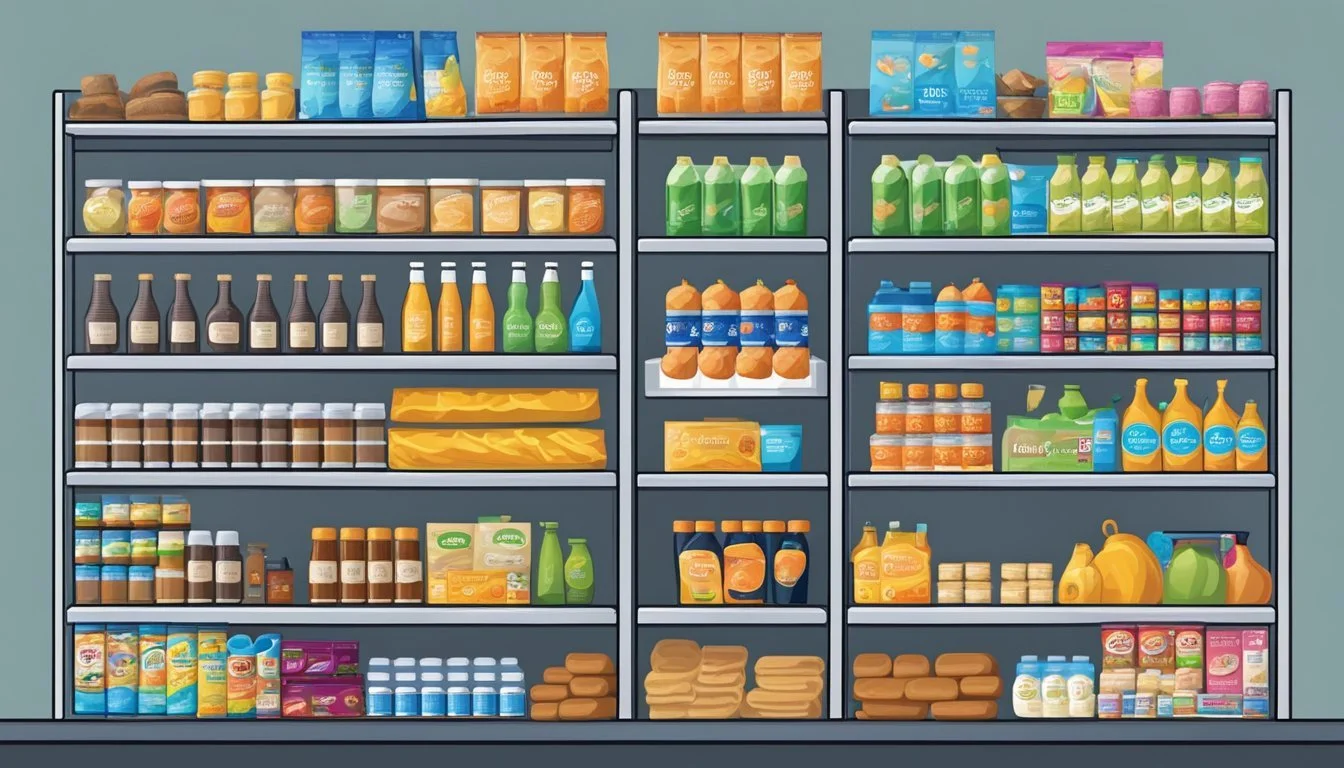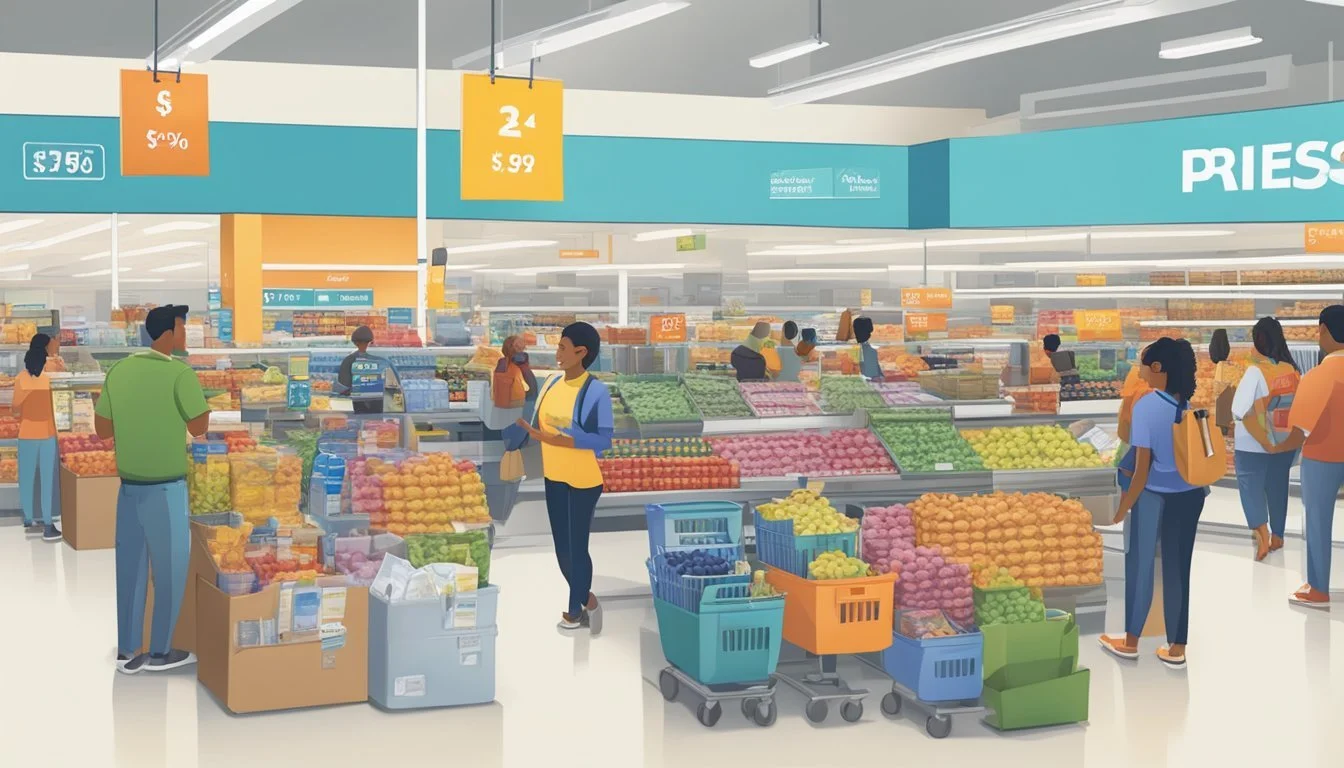Is Walmart Cheaper Than Ralphs?
Comparing Supermarket Prices
Part of Our Grocery Store Guide with Details on Walmart Prices and Ralphs Prices
In the competitive landscape of grocery retail, consumers often consider price as a significant factor in determining where to shop. Walmart, known for its wide-reaching presence and aggressive pricing strategies, is often cited as a cost leader in the industry. A basket of items at Walmart typically sets the benchmark for affordability, with costs often visibly lower than those at rival stores.
Ralphs, while maintaining a robust selection of products, is frequently observed to have everyday prices that are slightly higher than those found at Walmart. This price differential is apparent across various categories of goods, which suggests that shoppers looking for the most economical options might lean towards Walmart when looking to stretch their grocery budget. The nuances of this price comparison, however, might vary depending on the specific items and ongoing promotions, as well as geographic location.
Price Comparison Overview
Comparing Walmart and Ralphs reveals distinct pricing strategies that impact where consumers may find lower prices on groceries. Differences are evident in their approach to discounts, coupons, and sales as both aim to provide the best value to their customers.
Walmart's Pricing Strategy
Walmart is known for leveraging its massive scale to offer low prices across a wide variety of products. They often apply an everyday low price model, minimizing the reliance on short-term deals to attract customers. This strategy appeals to budget-conscious shoppers looking for consistent pricing rather than cyclical sales. Walmart's aggressive discounting approach can lead to significant savings on staple items such as milk and bread, often making it the more economical choice compared to competitors.
Consistent Value: Low prices on a broad range of items.
Discount Strategy: Fewer temporary deals, focus on everyday affordability.
Ralphs' Pricing Strategy
Ralphs, part of the Kroger family, employs a different approach. They offer a variety of discounts and coupons, which can lead to substantial savings for consumers who take advantage of their sales cycles and loyalty programs. While their regular prices on items may not always be as low as Walmart’s, strategic shoppers can find deals that rival or even beat Walmart's prices during these promotional periods. Ralphs often hosts sales events tied to holidays or seasonal items, providing opportunities for savings aligned with customer shopping patterns.
Strategic Savings: Deals available through sales and coupons.
Loyalty Rewards: Benefits for returning customers through a loyalty program.
Comparison by Product Categories
This section meticulously examines the cost distinctions between Walmart and Ralphs across four primary product categories, uncovering which retailer may offer the better value.
Grocery and Pantry Staples
Walmart typically offers competitive pricing on grocery and pantry staples such as rice, beans, and pasta. Generic brands offered by Walmart, like their "Great Value" line, are often priced lower than similar store brand products at Ralphs. Customers seeking to economize on pantry staples will likely find Walmart to be the more cost-effective option.
Fresh Produce and Meat
When assessing fresh produce and meat, the price differential can be less pronounced. While Walmart often has lower prices on a broad selection of goods, including fresh fruit and veggies, Ralphs may provide superior quality in their fresh produce and meat selections, which can influence consumer preference irrespective of minor price discrepancies.
Dairy, Deli, and Bakery
For dairy, deli, and bakery items, Walmart's store brand products like milk, cheese, and bread, typically undercut Ralphs' prices. For example, Ralphs lists milk at higher prices compared to Walmart's Great Value brand. However, consumers favoring organic produce and dairy may find more options at Ralphs, including their exclusive "Simple Truth" line.
Non-Grocery Items
Walmart expands its affordability to non-grocery items, offering various household goods at lower prices than Ralphs. This includes personal care products, cleaning supplies, and other essentials. For those looking to conduct comprehensive grocery shopping inclusive of non-food products, Walmart might deliver overall better value.
Store Services and Features
Walmart and Ralphs provide a range of services and features designed to enhance the shopping experience for their customers. These include loyalty programs with rewards, various online shopping options, and diverse additional services.
Loyalty Programs and Rewards
Walmart doesn't offer a traditional loyalty program but incentivizes customers with savings through its Walmart+ membership. This service includes benefits such as free shipping with no order minimum and discounts on fuel. Ralphs, on the other hand, offers a loyalty program that provides personalized deals and savings through digital coupons. Customers can earn points for every dollar spent, which can be redeemed for fuel discounts and other rewards.
Online Shopping Options
Both Walmart and Ralphs cater to the digital consumer with their online shopping platforms. Walmart Grocery offers a robust service where consumers can create a shopping list, choose from various store brands and name brands, and enjoy features like offer codes for discounts. Payment options include modern financing options such as SplitIt and Afterpay, but not all financing services are supported. Ralphs utilizes online platforms as well, with digital coupons and the ability for customers to save with loyalty program-related discounts during their online purchases.
Additional Services Offered
In addition to the basic grocery shopping experience, both chains provide a range of additional services. Walmart is known for its comprehensive services beyond grocery, including pharmacy, vision centers, and Walmart Pay as a payment option which aligns with the Apple Pay Later financing solution. Ralphs offers similar services, with pharmacies and a variety of payment options, although it does not directly support all the same financing options such as Viabill or Greensky. Both stores are oriented towards ensuring a convenient and accessible shopping environment for their customers.
Promotional Deals and Discounts
When it comes to savings at Walmart and Ralphs, each store offers a variety of promotional deals and discounts. Consumers can take advantage of regular sales and offers, coupon policies, and special discount policies designed to deliver value on their purchases.
Regular Sales and Offers
Walmart provides frequent discounts and promotions across a wide range of products. They use their substantial buying power to negotiate lower prices, which they pass on to customers. Ralphs, part of the Kroger family, often runs promotional deals particularly aimed at cost-conscious shoppers. Both stores cycle hot deals on everyday items like meat and produce.
Coupon Policies
Walmart accepts manufacturer's coupons and has a flexible coupon policy that enables shoppers to save extra on their groceries. Ralphs also accepts manufacturer's coupons and offers digital coupons through their loyalty program. Neither store typically allows the stacking of coupons, meaning customers cannot use more than one coupon per item.
Special Discount Policies
Walmart does not broadly advertise a veterans discount, student discount, teacher discount, or government worker discount, focusing instead on low prices for all customers. Ralphs offers various customer-specific discounts, such as senior discounts on specific days. Additionally, several promotions throughout the year are available to all customers, including free return policies which cater to shopper satisfaction.
Brand and Quality Assessment
This section examines the brand offerings and quality perceptions associated with Walmart and Ralphs, highlighting how these factors influence consumer choice.
Private Label and National Brands
Walmart and Ralphs both offer a mix of private label products and national brands. Walmart is known for its store brands like Great Value and Sam's Choice, which typically present lower prices compared to national brands. Ralphs, operating under the Kroger umbrella, offers its own private label products such as the Kroger and Simple Truth brands, which similarly aim to provide value to shoppers.
Perceived Quality of Goods
The perception of quality is crucial for consumers. National brands are often perceived
Consumer Experience
When assessing Walmart and Ralphs, customer experience plays a substantial role. It involves both the in-store shopping environment that clientele encounter and the online reviews or feedback that reflect wider consumer sentiments.
In-Store Shopping Environment
Walmart is known for its large, warehouse-like stores that prioritize a broad inventory and low prices. They typically offer ample parking and extensive operating hours, serving a high volume of customers. Aisle navigation and store cleanliness can vary by location, which impacts the shopping experience. Contrastingly, Ralphs tends to provide a more conventional supermarket environment, with attention to store aesthetics and layout, potentially offering a more pleasant atmosphere for its customers to shop in.
Online Customer Reviews and Feedback
Online customer reviews and feedback provide insights into the consumer experience at both Walmart and Ralphs.
Walmart: Online reviews often mention the affordability of products but also bring to light concerns relating to customer service quality.
Ralphs: Reviews tend to highlight a more favorable shopping experience in terms of store cleanliness and customer service.
Feedback from different platforms, such as Facebook or websites hosting expert reviews, suggests that while prices at Walmart are commendable, Ralphs may score higher in terms of store experience satisfaction among customers. However, this is not to say that every customer will prioritize experience over cost savings.
Market Presence and Locations
This section explores the physical footprint of Walmart and Ralphs, focusing on their accessibility and the extent of their reach across different markets.
Geographic Accessibility
Walmart operates a vast network of stores across the United States, ensuring a high degree of geographic accessibility for most consumers. These stores are strategically located in both urban and rural areas, making Walmart a convenient option for a wide demographic.
Urban Presence: Walmart stores can be found in major metropolitan areas, including Los Angeles (LA), which is also home to several local grocery chains such as Trader Joe's and Sprouts Farmers Market.
Rural Availability: Rural regions are not neglected, with Walmart ensuring coverage in these areas, unlike some national brands which are typically concentrated in urban locations.
Local and National Reach
Walmart's national reach is extensive, with a presence in almost every state. This massive footprint outpaces local groceries like Ralphs in terms of both store count and market penetration.
Local Groceries: Ralphs, a subsidiary of Kroger, primarily serves the California market, thus its reach is more concentrated when compared to Walmart. Other local grocery options, such as Aldi and Smart & Final, have their own regional limitations.
Competing National Brands: Walmart faces competition from other national brands like Kroger (parent company of Ralphs), Safeway, and Publix, but maintains a leading position due to its sheer scale. Whole Foods, another competitor, trails in store count but appeals to a niche market with its organic focus.
Convenience and Accessibility
When comparing Walmart and Ralphs, customers often consider the one-stop shopping convenience and store accessibility as significant factors in their shopping experience. These aspects are crucial in determining how efficiently they can shop for a variety of goods at affordable prices.
One-Stop Shopping Experience
Walmart prides itself on being a one-stop shop, where shoppers can find a wide selection of goods ranging from groceries to electronics, clothing, and household items. This convenience is a cornerstone of Walmart's strategy, allowing customers to purchase a diverse array of products in a single visit, which can contribute to the overall affordability of shopping by reducing the need for multiple trips to different stores.
Store Accessibility and Layout
In terms of store accessibility, Walmart's extensive network, including locations in rural areas, plays a key role in its availability to a broad customer base. The layout of the stores is designed for ease of navigation, with clear signage and logically arranged sections, making it straightforward for customers to find what they need efficiently. This accessibility sometimes surpasses that of Ralphs, particularly in areas where Ralphs has a smaller presence.
Walmart's focus on affordability is reflected not only in its pricing but also in its easily reachable locations and well-thought-out store layouts, which together enhance the shopping experience.
Conclusion
When comparing Walmart and Ralphs, data shows that Walmart generally offers lower prices on a variety of goods. This means that consumers looking for savings and affordability might find Walmart to be the better option.
Price Comparison:
Walmart: A typical shopping basket may cost an average of $119.44.
Ralphs: The same selection of items could total approximately $126.35.
The difference in pricing reinforces Walmart's position as a cost-effective choice for shoppers. It consistently ranks as a store where families could potentially save more.
In terms of promotions, Walmart also tends to offer more frequent discounts, enhancing its edge in affordability. Ralphs has its strengths, such as local brand recognition and specific deals, but for consistent everyday low prices, Walmart emerges as the winner in this comparison.
Shoppers should consider their unique preferences and needs, as other factors like location, product selection, and shopping experience also play a role in determining the best grocery store for an individual. However, purely from a price standpoint, Walmart leads in providing cost-saving opportunities for a majority of consumers.











